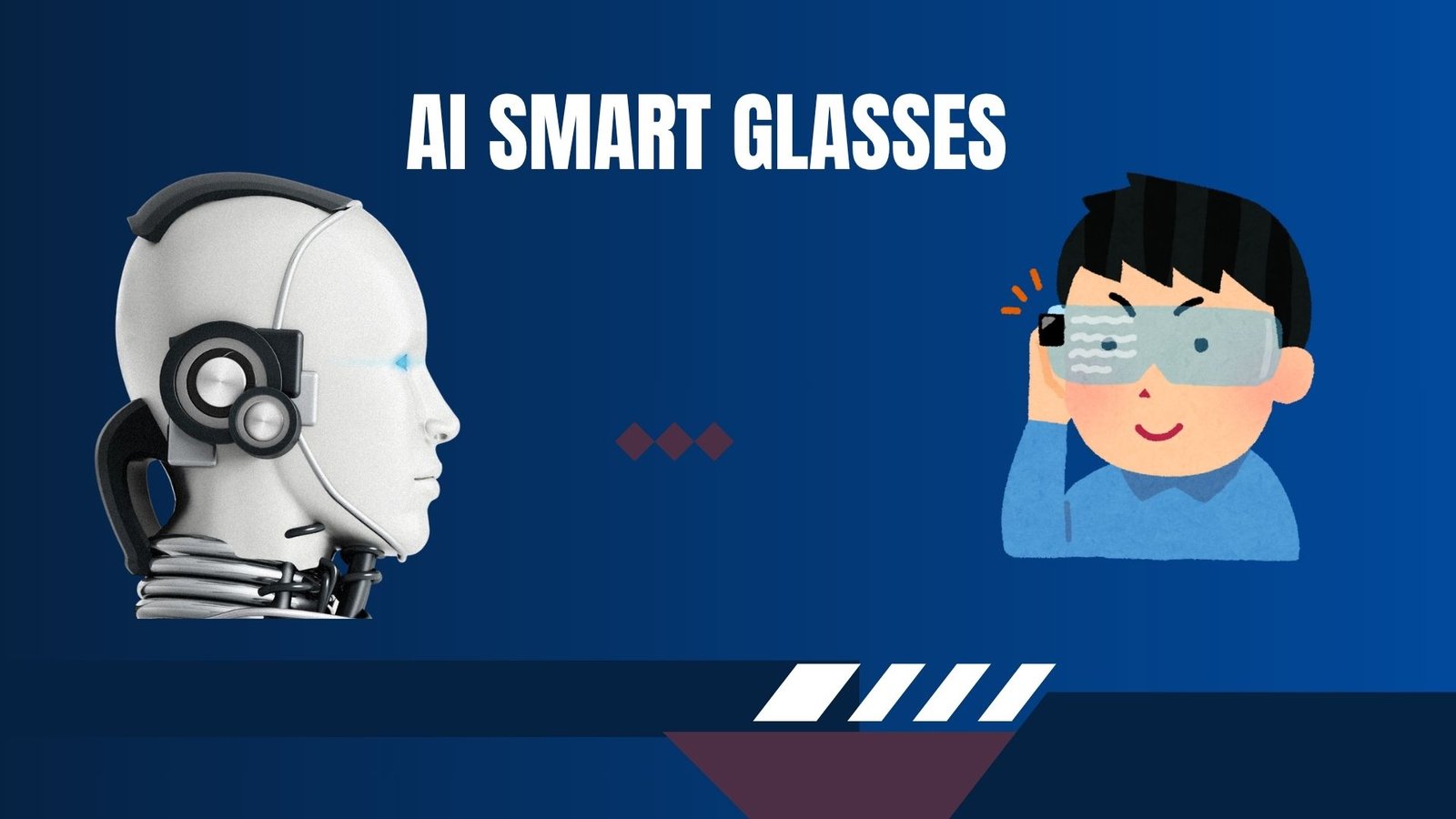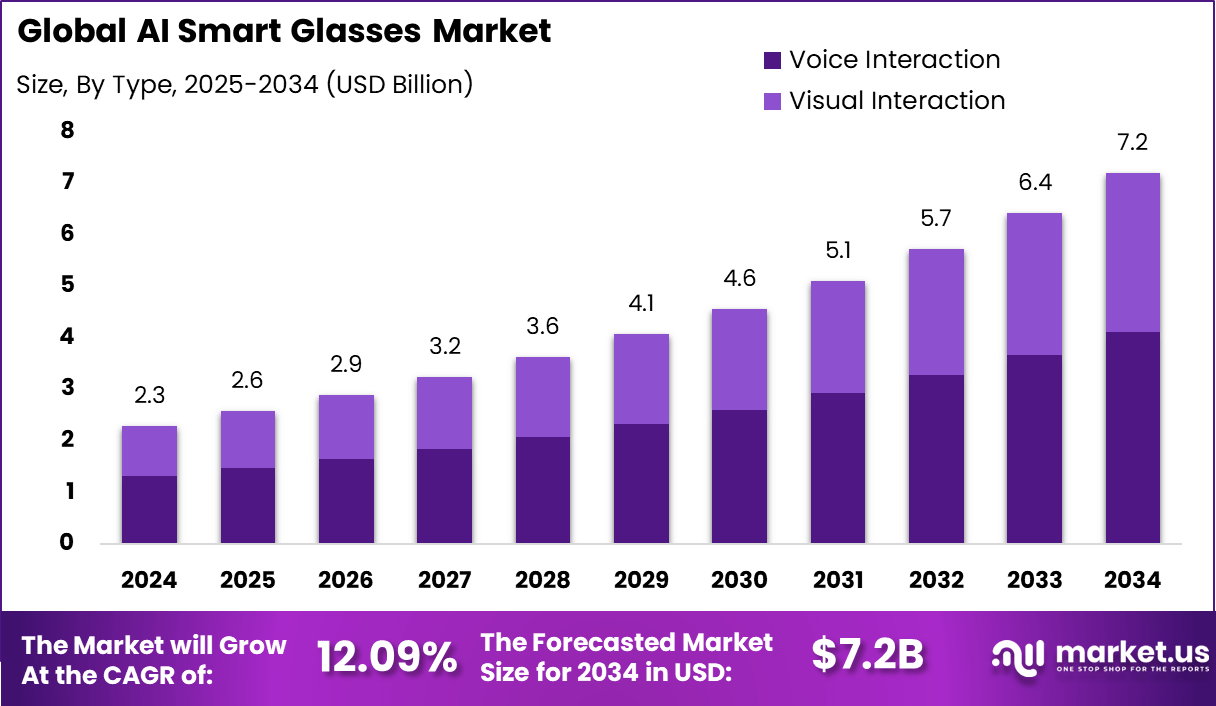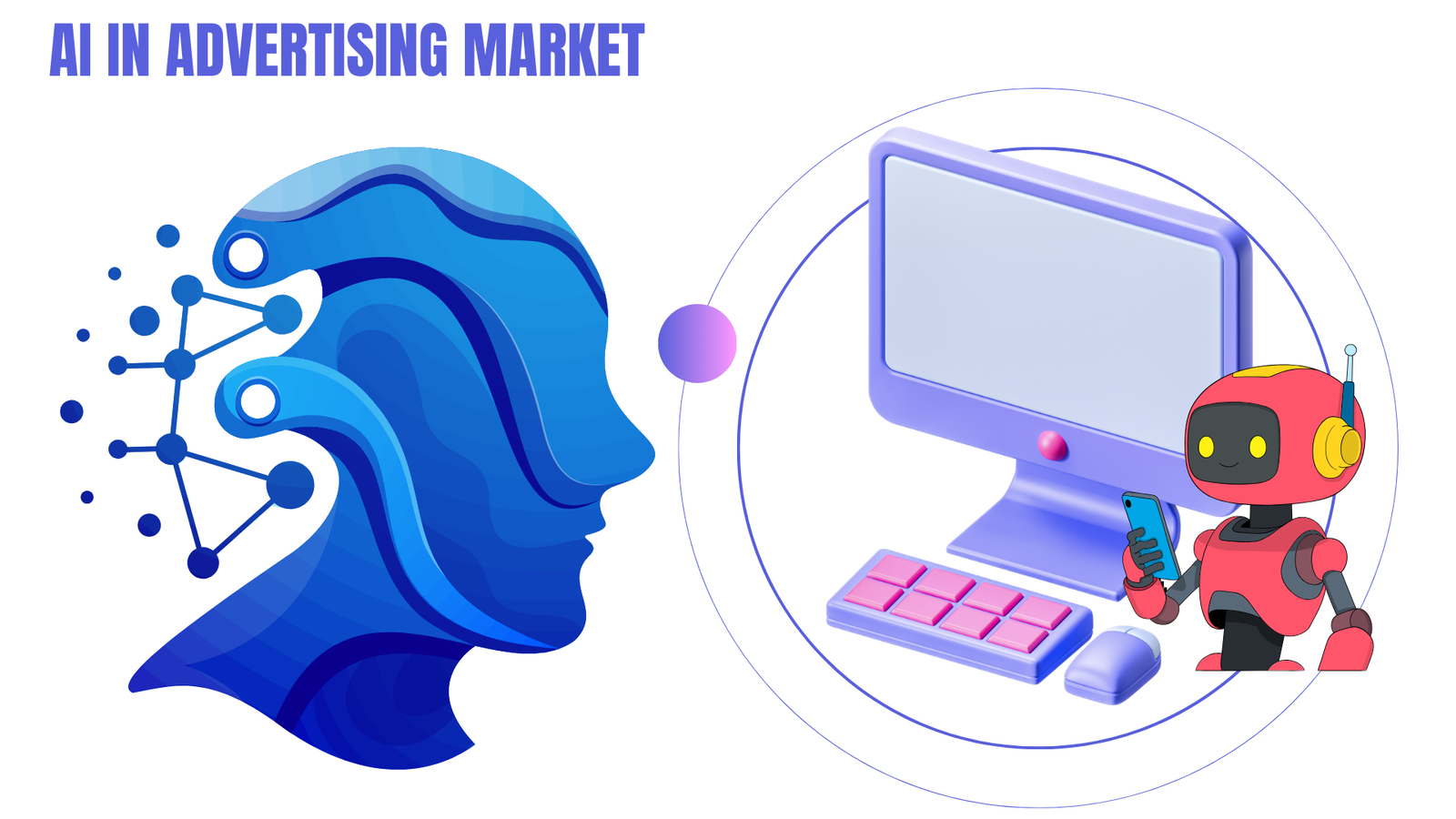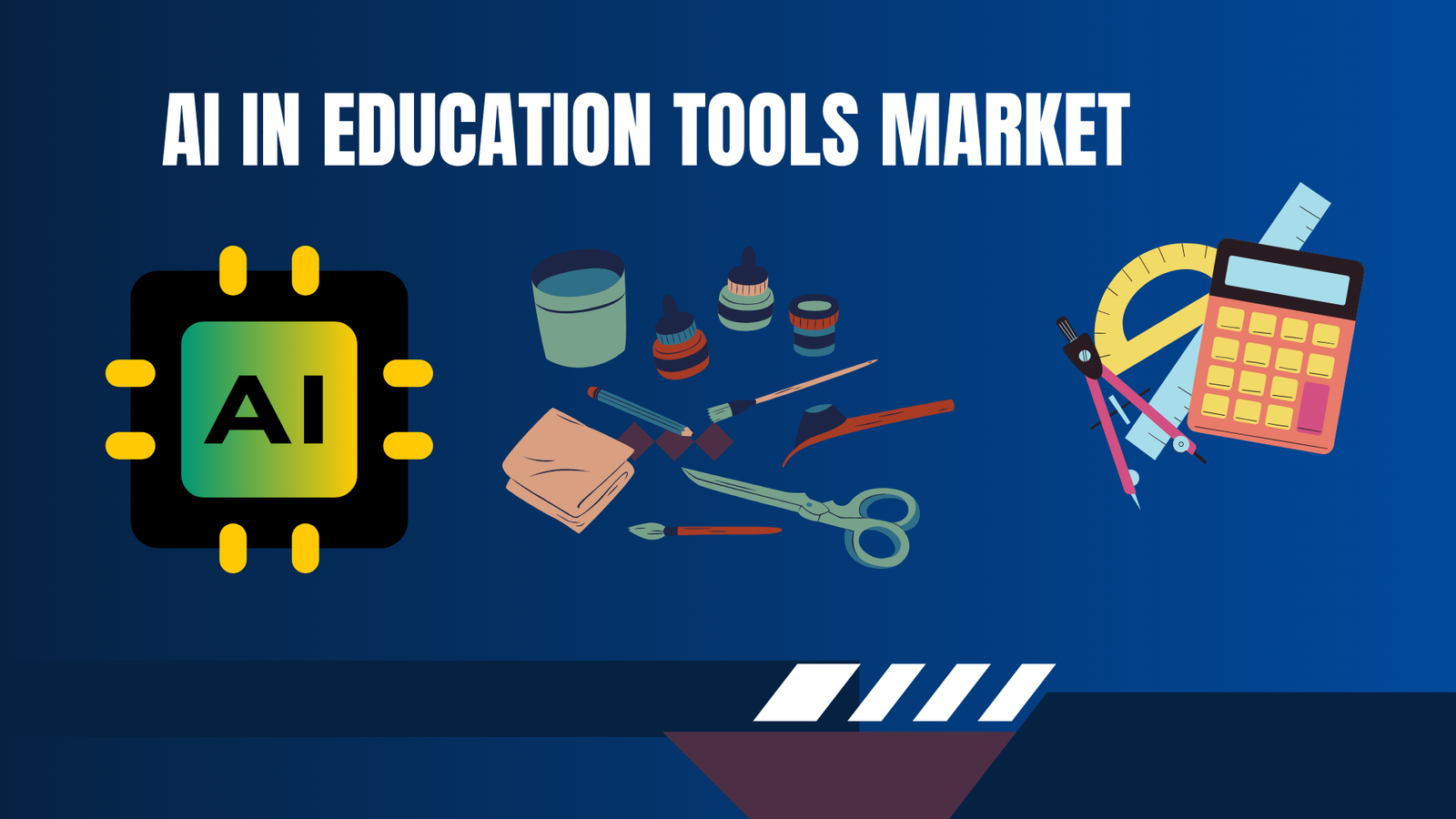AI Smart Glasses Market to hit USD 7.2 Billion By 2034
Updated · Oct 07, 2025

WHAT WE HAVE ON THIS PAGE
AI Smart Glasses Market Size
The Global AI Smart Glasses Market is projected to reach USD 7.2 billion by 2034, rising from USD 2.3 billion in 2024, at a CAGR of 12.09% between 2025 and 2034. In 2024, North America led the market with over 37.5% share, generating USD 0.8 billion in revenue.
The AI Smart Glasses Market involves wearable eyewear integrated with artificial intelligence that delivers augmented vision, real-time information, and interactive experiences. These glasses combine cameras, sensors, voice recognition, and display technologies with AI software to offer functionalities like object recognition, language translation, hands-free communication, and immersive augmented reality. They are used across consumer, healthcare, manufacturing, defense, education, and industrial sectors, with demand fueled by both enterprise applications and lifestyle enhancement needs.
Top driving factors for this market include rapid advancements in AI and augmented reality technologies, widespread 5G network coverage enabling real-time data processing, and growing demand for hands-free, productivity-enhancing devices. AI capabilities such as facial recognition, voice assistance, and contextual information display are increasingly integral, while 5G enhances response speed and connectivity. Consumer interest in augmented reality experiences through fitness, gaming, and communication applications also contributes significantly. The miniaturization of components that enhances comfort and battery life supports adoption.

Key Insight Summary
- By Type: The Voice Interaction segment led the market with a 57.2% share, reflecting strong consumer interest in hands-free, AI-powered features. The demand is being driven by convenience in navigation, real-time translation, and personal assistance.
- By Application: The Consumer Electronics segment accounted for the largest share at 39.1% in 2024. Lifestyle integration, personal tech adoption, and seamless connectivity with smartphones and other devices supported this dominance.
- By Region: North America held a 37.5% market share, underlining the region’s role as an early adopter of wearable AI technologies. Strong ecosystems of tech innovators, coupled with consumer readiness, contributed to this leadership.
- United States Market: The U.S. market reached USD 0.39 Billion in 2024, expanding at a CAGR of 11.9%. This growth underscores the country’s leadership in AI-enabled wearables, supported by innovation pipelines, high consumer spending power, and strong adoption in both consumer and enterprise use cases.
Analysts’ Viewpoint
Demand analysis shows that industries like logistics, healthcare, and manufacturing are major adopters, realizing tangible productivity and accuracy gains. For example, over 40% of North American logistics companies use AI smart glasses to optimize warehouse operations, achieving 25% faster picking times and 18% fewer errors. Healthcare providers benefit from improved surgical precision and remote patient monitoring, reducing errors by more than 30% in some cases. Consumer sectors also drive demand as smart glasses become tools for immersive entertainment, communication, and fitness tracking.
Technologies increasing adoption include AI-driven real-time object and facial recognition, voice-controlled assistants, augmented reality overlays, and seamless connectivity enabled by 5G. These technologies make smart glasses practical for continuous daily use and complex professional applications. The integration of AI chips with low power consumption, improved sensors, and lightweight designs has made the devices more user-friendly and durable, allowing longer wear time without discomfort.
Key reasons for adopting AI smart glasses are hands-free operation enabling multitasking and safety, enhanced situational awareness through real-time data, improved efficiency, and accuracy in specialized tasks, and enriched user experience with context-aware assistance. Industries use them to optimize workflows, reduce training time, and improve collaboration through remote support. Consumers enjoy immersive experiences and personalized information delivery, driving lifestyle adoption.
Investment opportunities and business benefits
Investment opportunities in this space are strong due to the evolving business models beyond hardware sales toward ecosystem-centric approaches. Subscription services for AI-driven features like translation, real-time data, and personalized content provide recurring revenue streams. Vertical industries such as healthcare, manufacturing, education, and retail offer specialized application avenues, attracting targeted investments. Continuous R&D and partnerships between technology companies and eyewear manufacturers foster innovation, ensuring the market’s growth and diversification.
The business benefits include measurable productivity improvements, reduced operational errors, enhanced training effectiveness, lowered travel and communication costs, and the ability to offer customers immersive, interactive experiences. Enterprises witness ROI through improved employee performance and customer engagement. The devices also support sustainability goals by reducing resource waste through optimized workflows and remote collaboration.
Role of generative AI
The role of generative AI in AI smart glasses is becoming increasingly central. These glasses leverage generative AI to understand and react to complex environments, allowing users to interact with their digital assistants naturally and instantly. They can process not only voice commands but also images, videos, and sounds, vastly improving real-time information retrieval and action.
For instance, generative AI enables smart glasses to translate foreign languages on the spot, identify objects, provide personalized recommendations, and even facilitate online purchases hands-free. This integration provides a seamless user experience without needing to reach for a smartphone. Recent user experience data shows that three out of the top four uses of AI glasses are powered by generative AI functionalities such as tailored recommendations and location-based services, reflecting their strategic importance in the technology ecosystem.
Emerging trends
Emerging trends in the AI smart glasses market underscore a significant shift toward devices that are sleek, consumer-friendly, and deeply integrated with augmented reality and AI agents. Sales of these glasses have tripled compared to previous years, with key markets like North America leading in adoption. One notable trend is the rise of AI agents powered by multimodal large language models embedded within the glasses, enabling higher levels of interaction and utility. The design evolution has made them resemble traditional eyewear, increasing their social acceptance.
Developer ecosystems are also expanding, allowing more apps for real-time translation, object recognition, and map navigation to be created and used on these devices. As an example, Meta’s Ray-Ban smart glasses have sold over one million pairs, illustrating strong consumer demand. The market shows an increasing shift from industrial applications toward everyday consumer use, driven by improved design and affordable technology.
Growth factors
Growth factors for AI smart glasses revolve around widespread adoption in various industries and the broadening use cases enabled by AI and AR technology integration. Industrial sectors including healthcare, logistics, retail, and education benefit from real-time data access and hands-free operation that smart glasses provide, leading to increased productivity and improved service quality. In healthcare, these devices assist with remote monitoring and AR-enhanced surgeries.
Retailers use them to enhance customer experiences through personalized service, while logistics companies employ smart glasses for inventory tracking and worker assistance. The education sector sees benefits from immersive learning environments powered by AR and AI. Despite high production costs presenting challenges, ongoing advancements in AI and related technologies continue to drive adoption. About 36% of U.S. enterprises already use smart glasses in their operational workflows, a sign of growing business integration.
Key Market Segments
By Type
- Voice Interaction
- Visual Interaction
By Application
- Industrial
- Medical
- Consumer electronic
- Others
Top Key Players in the Market
- Microsoft
- Vuzix
- North
- Magic Leap
- RealWear
- Epson
- ODG
- Snap
- Meta
- Others
Report Scope
| Report Features | Description |
|---|---|
| Market Value (2024) | USD 2.7 Bn |
| Forecast Revenue (2034) | USD 8.8 Bn |
| CAGR(2025-2034) | 12.6% |
| Base Year for Estimation | 2024 |
| Historic Period | 2020-2023 |
| Forecast Period | 2025-2034 |
| Report Coverage | Revenue forecast, AI impact on Market trends, Share Insights, Company ranking, competitive landscape, Recent Developments, Market Dynamics and Emerging Trends |

Barry loves technology and enjoys researching different tech topics in detail. He collects important statistics and facts to help others. Barry is especially interested in understanding software and writing content that shows its benefits. In his free time, he likes to try out new healthy recipes, practice yoga, meditate, or take nature walks with his child.









